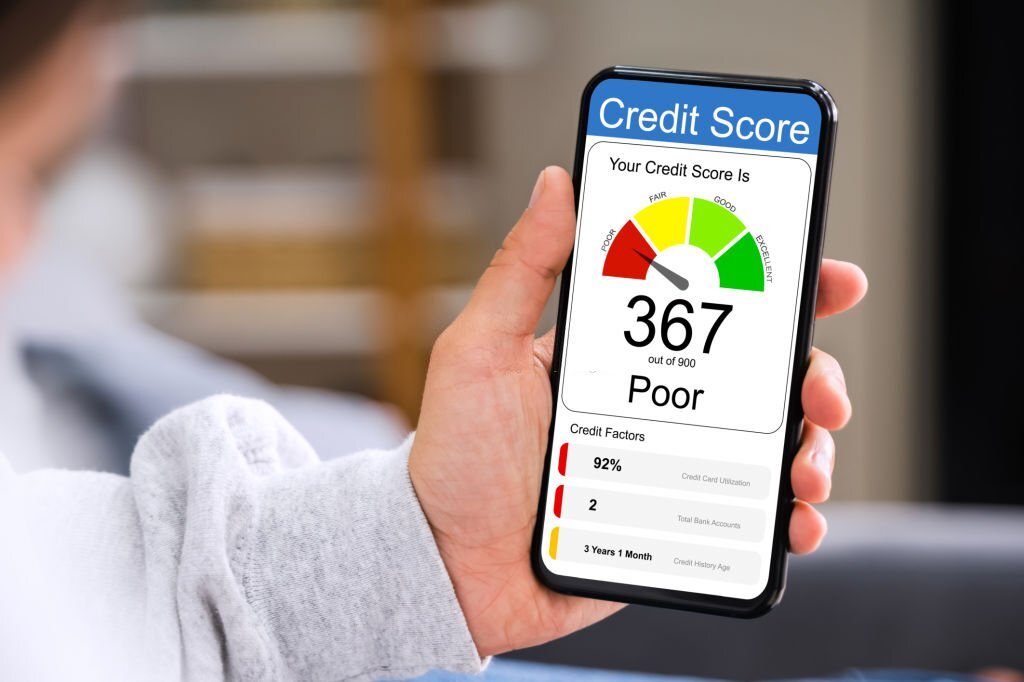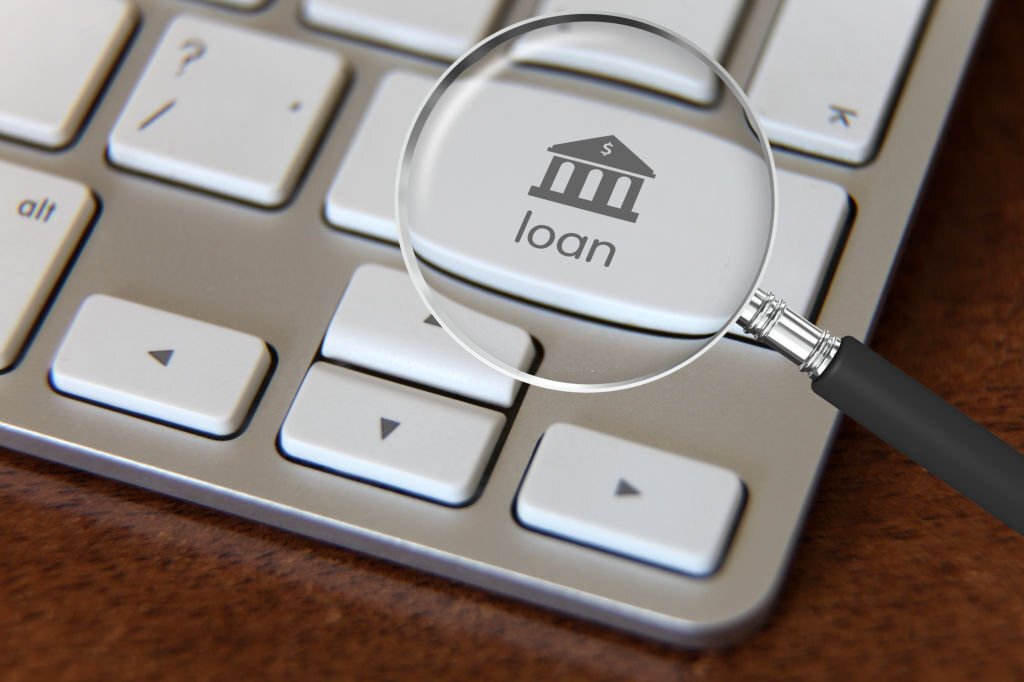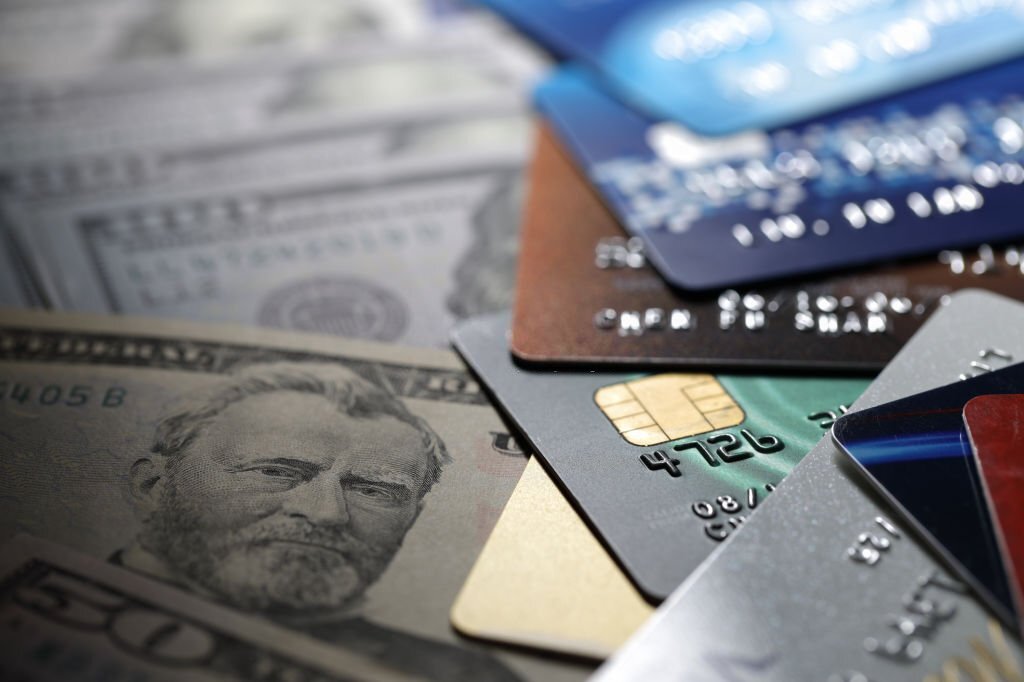If you’ve got bad credit, then you already know how hard it is to get a loan, especially from a bank. So, does that mean you should give up? Absolutely not.
Lots of money lenders believe that all humans should have a fair chance at getting a loan, and that’s exactly why bad credit loans are now a thing.
So, if you’re interested in learning more about these loans, keep on reading. We’ll tell you all you need to know about the subject, from how much it costs to the pros and cons of bad credit loans. So, let’s get the ball rolling, shall we?
What this article covers:
- Is It Possible to Take Out a Loan When You Have Bad Credit?
- The Issue With Bad Credit Loans
- Advantages of a Bad Credit Loan
- Who Would Benefit From a Bad Credit Loan?
- Why Are Banks Loans So Hard to Get?
- What’s Considered a Bad Credit Score?
- What Affects Your Credit Score?
- What Type of Loan Is a Bad Credit Loan?
- Eligibility Criteria for a Bad Credit Loan
- How to Increase Your Chances of a Bad Credit Loan Approval
- How to Apply for a Bad Credit Loan
- How Much Does a Bad Credit Loan Cost?
- How to Pay Back Bad Credit Loans
- What Happens If You’re Struggling to Repay the Loan?
- How Long Does a Default Stay on Your Credit History?
- Can You Get a Bad Credit Loan If You’re on Centrelink Benefits?
- What to Do If You Can’t Find a Good Lender
- Things to Consider When Choosing a Lender
Is It Possible to Take Out a Loan When You Have Bad Credit?

Absolutely!!
Now, admittedly, people with bad credit aren’t exactly a money lender’s first pick. In fact, some lenders will flat out refuse to deal with clients with a bad credit history.
However, some aren’t all. If you look hard enough, you’ll be able to find lenders willing to work with you. You may even find lenders who don’t perform a credit check at all.
Sounds too good to be true, right? Well, let’s see if there’s a catch.
The Issue With Bad Credit Loans
It goes without saying that no money lender would prefer to give his money to someone with bad credit.
Basically, the lower your credit score, the more unreliable you seem and the more risk you pose to the lender. That’s why most banks and financial institutions simply don’t give out loans to such people.
However, some private money lenders do, but why? Money lenders aren’t exactly altruistic, so why would they risk their money on someone that seems untrustworthy?
Well, these lenders have found a few ways to minimize or eliminate the risk.
For instance, they may set high-interest rates or fees. They may also refuse to give out a loan without collateral. Some will only agree to lend you small loans. That way, even if you default on the loan, their loss won’t be too big.
In short, loans on bad credit will usually have worse terms than ones on good credit. Either the amount will be smaller or the fees will be higher. In the worst-case scenario, you’ll have both. So, don’t be surprised if your loan terms aren’t exactly to your liking.
Advantages of a Bad Credit Loan

It isn’t all doom and gloom with a bad credit loan. Sure, it won’t have as good an interest rate as a regular bank loan, but it has its silver lining.
First off, it’s incredibly easy to get approved. Since you don’t have to undergo a thorough screening process, you can have your money a few hours after filling in a loan application.
Even if the lender performs a credit check on you, it usually won’t take more than a couple of days to get the money.
Best of all, you can take out the loan without even leaving your house. Nowadays, all you need to do is fill out an online application form and wait. Once the lender verifies your details, you’ll get the money via a bank transfer, usually in less than a day.
Oh, and by the way, did you know that bad credit loans can be used to improve your credit history?
That’s right. If you take out a bad credit loan and you make all your payments on time, your credit score will go up. That’s because you’ve proved to the lenders that you’re a trustworthy client.
So, the more loans you repay, the more your credit score will improve and the more reliable you appear. Eventually, you’ll get to a point where your credit history will qualify you for a bank loan.
Who Would Benefit From a Bad Credit Loan?
It’s not just people with less than desirable credit who can benefit from a bad credit loan.
Bad credit loans are also great for people with little to no credit history. Since these individuals don’t have an established credit history, many banks and financial companies may be wary of them.
It’s not that the banks don’t trust them. It’s more that they don’t have the means to check their eligibility.
Put simply, since they don’t have a way to assess a client’s financial behaviour, they can’t tell if they’ll be a good client or a troublemaker. Accordingly, most banks will hesitate to give out loans to such a person.
So, if you’ve got little to no credit history, it’s best to try your luck with private money lenders rather than banks.
Why Are Banks Loans So Hard to Get?
Banks have strict lending criteria. This is mostly due to the restrictions placed by the Australian government, which aim to protect the country’s financial system.
Accordingly, you’ll find that bank loans tend to be quite a headache.
Not only do they need to assess your living expenses, but they also need to verify all your documents, account for your debts, and check your bank accounts.

Moreover, the Australian Securities and Investment Commission (ASIC) and the Australian Prudential Regulation Authority (APRA) also require banks to keep written records on how they assess loan applications.
All these strict guidelines make getting a bank loan nearly impossible. And even if your credit score qualifies you for the loan, it could take you weeks, if not months, to receive the money.
So, to spare themselves the hassle, most people prefer to deal with private loan providers. Not only are they fast, but they also accept a wide range of clients, all with different financial situations and credit scores.
What’s Considered a Bad Credit Score?
A credit score ranges from 0 to 1000.
The lower the score, the worse it is, and vice versa.
Most banks tend to give out personal loans for scores equal to or higher than 700. Any lower than that, and you’re considered a “high risk” client.
Still, some banks may approve your loan if you’re not too far off the 700 mark. However, if your score is between 350-550, you can kiss any chance you had at getting a bank loan goodbye.
Private money lenders will be the only ones willing to do business with you, and not all of them at that.
What Affects Your Credit Score?
Numerous things can impact your credit score, including:
- An unpaid parking ticket
- Missed or late bill payments
- Paying defaults
- Bringing your accounts up to date
- Checking your credit score too many times
- Co-signing for someone with bad credit
- Applying for several credit cards and loans
Note that taking out multiple loans can initially lower your credit score. That’s especially true if taken out in a short duration.
However, if you pay back each loan on time, your credit score will considerably improve, climbing way past its original mark.
So, don’t let the initial drop scare you from taking out a few bad credit loans.
What Type of Loan Is a Bad Credit Loan?

Bad credit loans fall within the category of personal loans, which can either be secured or unsecured.
A secured loan is when you borrow a sum of money while pledging a valuable asset as collateral. That way, if you ever default on your loan or don’t pay it back in full, the lender has a way of getting their money back.
Since secured loans aren’t particularly risky for lenders, they usually have low interest rates and long loan terms. Moreover, lenders will allow you to borrow larger amounts, even if you have bad credit or no credit history at all.
That’s not the case with unsecured loans. Put simply, these types of loans are too risky to the lenders. As such, they’ll usually have much higher fees and/or interest rates. The amount you can borrow will also be quite limited. That’s doubly true if you’ve got bad credit.
So, when offered a choice, always go with a secured loan. Sure, you’ll temporarily put your possession at risk, but nothing will happen to it as long as you pay the loan back on time.
Only choose an unsecured loan if you’ve got no assets to use as collateral.
Eligibility Criteria for a Bad Credit Loan
Generally, the eligibility criteria for bad credit loans in Australia include:
- Being over 18 years of age
- Being an Australian citizen or a permanent resident of Australia
- Having an active bank account, email, and phone number
- Earning a regular income for at least the previous three months (at least $30,000 per year)
Note: If you’re in a Part 9 debt agreement or bankrupt, lenders won’t accept your loan application unless you’ve been discharged for 12 months or more.
How to Increase Your Chances of a Bad Credit Loan Approval
There are a couple of things you can do to make your loan application more appealing to the lender.
For one, you should try to avoid job and address changes.
Also, show the lender your recent credit behaviour. If you show them that you’ve paid your bills and other loans on time, the lender will be more liable to approve your loan. Saving a deposit will also impart a good impression on the lender.
How to Apply for a Bad Credit Loan

Thankfully, it’s quite easy to apply for a bad credit loan.
You simply fill out an application detailing your personal data and what type of loan you want. In that application, you’ll also specify how much you need and your preferred loan terms.
Once the lender reviews your application, they’ll call you to confirm your details. If everything checks out, they’ll send over the contract for the loan to sign. When the deal is done, you’ll find the money in your bank account in just a few hours (though it may take longer for large sums).
Information and Documents Needed for a Bad Credit Loan Application
Most loan applications require that you share the following:
- A copy of your ID
- Certain personal details, such as your email, address, and phone number
- Employment details
- Proof of income (payslip or income statement)
- 90-day history of your transactions
How Much Does a Bad Credit Loan Cost?
It depends on how much money you take out, and whether the loan is secured.
For small unsecured loans, ranging from $300 to $2000, you’ll only be required to pay a 20% establishment fee and a monthly maintenance fee of 4%.
No lender can charge you more than this, even if you have bad credit. That’s because all small loans are regulated by the Australian Securities & Investments Commission (ASIC).
So, if you’re borrowing $1000, you’ll end up paying:
- Establishment fee: $200
- Monthly maintenance fees: $80
- Total: $1,280.00 (if repaid in one month)
For medium-sized secured sums, between $2001 and $5000, you’ll have an annual percentage rate of 48%. In most cases, you’ll also be charged an establishment fee.
So, for a $3000 loan, you can roughly expect to pay a number ranging from $3600 to $4300. In general, the amount will depend on how long your loan term is.
Finally, for large sums exceeding $5000, expect an interest rate of around 21.24%. Again, there will probably be an establishment fee, but don’t expect it to be the same among all lenders.
Note: Some lenders will have hidden charges and fees. Also, some will set late payment fees, which can come up to $7 per day. And if you default on the loan, there are default fees, which can be twice as much as the original loan.

How to Pay Back Bad Credit Loans
Thankfully, most lenders allow you to choose how you’d like to repay your loan.
Generally, most bad credit debts have to be repaid in no more than 52 weeks.
Of course, the longer your loan term, the more money you’ll pay back due to the accumulated interest. That’s why some money lenders set their minimum loan term at 12 weeks.
However, that’s not always the case. Honestly, a few lenders can set your loan term for 1 week if you so desire.
Even if they don’t, most loan services won’t make you pay a fee if you repay your loan before the specified loan term is up. So, if you can repay your loan early, do it and save yourself a few extra dollars.
As regards the frequency of the payments, you can choose weekly, fortnightly, or monthly. Again, the choice is up to you, so pick what makes you the most comfortable. And if you can, choose a shorter loan term to cut back on fees and interest.
What Happens If You’re Struggling to Repay the Loan?
If the time for your usual payment has come and you can’t come up with the money, the first thing you need to do is contact your lender.
Explain your situation to them thoroughly and tell them why you won’t be able to make your payment. Your lender will probably understand and take your circumstances into account.
They may give you an extension or decrease your payment for this month, with the rest to be repaid later. They may even help you refinance your loan so that you can have loan terms more suitable to your current circumstances.
Still, keep in mind that not all lenders will be understanding. Some will simply send you a warning and claim your security after a reasonable amount of time has passed.
And, of course, if your loan isn’t secured, expect legal repercussions and a considerable hit to your credit score.
How Long Does a Default Stay on Your Credit History?

A default is defined as an amount owed over $150 that’s overdue for more than 60 days.
When you default on part or all of your loan, the incident will stay on your credit report for five years and negatively impact your credit score throughout.
Occasionally, a money lender will deem the default to be a clearance. This is when the lender believes you never had any intention of paying back the loan. In such a case, the default will stay on your credit for two additional years, for a total of seven whole years.
Can You Get a Bad Credit Loan If You’re on Centrelink Benefits?
Yes, but it’ll probably take you some time to find a money lender willing to accept your application.
Unfortunately, most money lenders don’t approve of clients whose income is dependent on Centrelink benefits. That’s mostly because they believe such clients will have a hard time repaying their loans.
Still, some loan providers will accept clients who receive Centrelink payments, especially those who make more than $480/$500 per week.
So, don’t despair of getting a loan after the first rejection. Keep asking, and you’ll eventually find your lender. On the off chance you can’t, we’ll discuss below a few other ways you can get your hands on some extra money.
What to Do If You Can’t Find a Good Lender
If you’re scared of dealing with a money lender or if you simply can’t find one willing to accept your application, here are a few things you can try to get money.
No-Interest Loan
As the name suggests, this loan has no interest, fees, or hidden charges. To top it off, the loan providers don’t even look at your credit score.
This is all thanks to the “No Interest Loans Scheme” in Australia. With it, you can borrow up to $1500, and all you need to do is pay back what you borrowed over 12-18 months.
However, there are a few conditions for the loan. First off, the loan needs to be used for essential purposes, such as household items, educational materials, medical/dental services, and car repairs.
Secondly, you need to either have a Health Care Card, a Pensioner Concession Card, or make an income of $45,000 per year after tax. If you don’t meet any of these conditions, you won’t be able to get a no-interest loan.

Centrelink Advance Payment
If you’re on Centrelink and can’t find yourself a lender, you can apply for an advance payment.
Simply go on the Service Australia website and put in your application. You’ll receive your regular Centrelink payment in advance, just like that. There are no credit checks, fees, interest rates, or repayments.
Just keep in mind that you’ll be lacking funds for the coming weeks. So, you’ll probably need to work a few extra shifts or take a second job to cover your regular expenses.
Payday Loan
Payday loans, historically called “small amount loans”, enable you to borrow up to $2000. Generally, payday loans come with a repayment term ranging from 16 days to one year. However, they tend to have a much higher fee than personal loans.
In return, however, they’re much easier to acquire. Even people with bad credit or no credit history are never turned away.
Still, one thing to keep in mind about payday loans is that they’re almost never reported to credit bureaus. Accordingly, even if you pay back the loan on time, your credit score won’t improve. And honestly, if that wasn’t enough to deter you from payday loans, the ridiculous fees should do it.
So, don’t resort to payday loans until you’ve exhausted all your options.
For instance, ask your employer for overtime or try to borrow from friends and family. Also, make sure to look for a secured personal loan with a small interest rate.
Things to Consider When Choosing a Lender
Thankfully, several lenders offer bad credit loans in Australia.
However, each lender tends to operate a little differently. So, let’s see what you need to look at before settling on a lender.
Lender’s Reputation
It’s imperative that you only deal with a trustworthy loan provider. Don’t make deals with a dodgy lender just because you have bad credit. You need to find yourself a well-established company with a full-transparency policy.
If you don’t, you’ll probably be taken advantage of, be it through unfair interest rates or unreasonable repayment terms.

Turnaround Time
Turnaround time is how long it takes the lender to approve your application and send you the money.
Some lenders will approve your loan in less than an hour. Others may need a day or more to review and assess your application.
Depending on how thoroughly the lender reviews your application and how busy they are, the turnaround time can greatly vary.
So, if you have an urgent expense that can’t wait a day or two, try to choose a lender with a short turnaround time.
Fees
For small loans, all lenders should have a 20% establishment fee and a 4% monthly fee.
The variation starts when you get to the medium and large loans. Some will set ridiculously high interest rates, or they’ll have hidden charges and fees. Even the establishment fee can widely vary, being anywhere from $100 to $700 or more.
That’s why you need to ask around a lot before choosing a lender. You may be getting hoodwinked without knowing it.
Repayment Terms
Loan terms will also differ from lender to lender.
While most will set the maximum for small and medium at 52 weeks, the minimum can be anywhere from one week to 12 weeks.
As for large loans, you can find loan terms set at seven years, though not all lenders prefer to go that high with bad credit loans.
The point is, do your best to find a lender that’s offering repayment terms that suit your financial situation. And if you can, opt for shorter terms to save money.
FAQs
What’s an Establishment Fee?
When your loan is established, the lender charges you what’s called a fee. This fee covers things like credit assurance, assessment, and the verification services employed to process your application. Establishment fees need to be paid upfront, and they aren’t refundable.
What Can You Offer as Security?

Anything of value can be offered. This includes things like cars, motorcycles, houses, jewels, bonds, shares, and even cash in a savings account. As a general rule, your asset should be of equal worth to your loan.
What Can You Use a Bad Credit Loan for?
Since a bad credit loan is a personal loan, you can do whatever you want with the money. You can use it for car repairs, medical expenses, travel expenses, home renovations, rental bonds, etc.
Can You Get a Bad Credit Loan if You’ve Never Gotten a Loan Before?
Certainly. Being a first-time borrower won’t disqualify you from getting a bad credit loan.
How Do You Know You’re Dealing With a Legitimate Lender?
Thankfully, all lenders on Orange Loans are reputable and trustworthy. Still, it’s always best to conduct a little online search on your lender before closing the deal. Make sure they have an Australian Credit License and good all-around reviews from previous clients.
Conclusion
If you’ve got bad credit or little to no credit history, a bad credit loan can be just the thing you need.
With it, you’ll be able to get the money you need without having to go through a rigorous screening process. Even better, you can use bad credit loans to improve your credit score step by step.
Just make sure to choose loan terms that suit you. If you don’t, the loan will backfire and cause your credit score to plummet.
Was the guide helpful? Check out these extra resources to delve deeper:
- How Can You Benefit from Bad Credit Payday Loans with Instant Approval?
- Bad Credit Personal Loans: What Are Your Options?
- Bad Credit Boat Loan
- Bad Credit Unsecured Personal Loans with Very Fast Approval Australia
- How to Get a $1000 Loan with a Bad Credit
- How to Get a $2000 Bad Credit Loan in Australia
- Bad Credit Bike Finance
- Bad Credit Payday Loans Australia
- Bad Credit Same-Day Loans Australia
- A Guide to $1500 Loans for Bad Credit
- Best Loans for Bad Credit
- Are There Loans for Bad Credit Debt Consolidation in Australia?
- Loans for 500 Bad Credit: Is It Possible to Get Approved?
- I Need a $25,000 Loan with Bad Credit – Do I Qualify and How to Apply?
- Second Chance Loans Bad Credit
